New and Affordable Surface Options for Housing
Spaces and Areas Best Suited for High-Pressure Laminate Surfaces
High-pressure laminate surfaces can be applied to almost any room in a dwelling, from the traditional kitchen and bathroom locations to the living room, den, bedrooms, and playrooms. Designers can play with these materials in ways they can’t with other surfaces.
Kitchens and Bathrooms
Kitchens and bathrooms have always been obvious places where designers need to consider surfaces. In kitchens, countertops and backsplashes are high-priority locations, and designers often think first about traditional stone or ceramics. Both require specialists to install, and ceramic tiles carry the added challenge of requiring grout, which can be troublesome to clean. Materials such as high-pressure laminates not only open up the options for a never-ending variety of countertop and backsplash designs, but they also can be applied to many other spaces in the kitchen: the vertical sides of kitchen islands, on table tops and cabinet fronts, and even on doors.
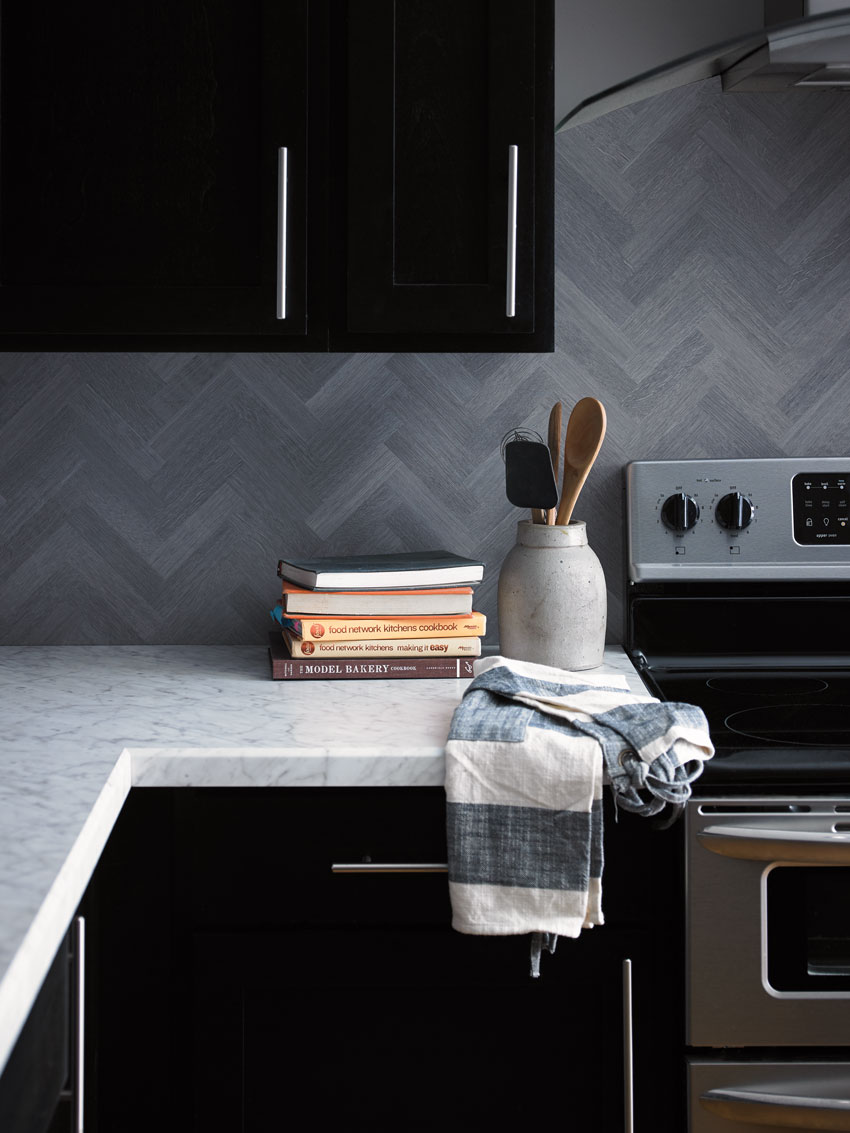
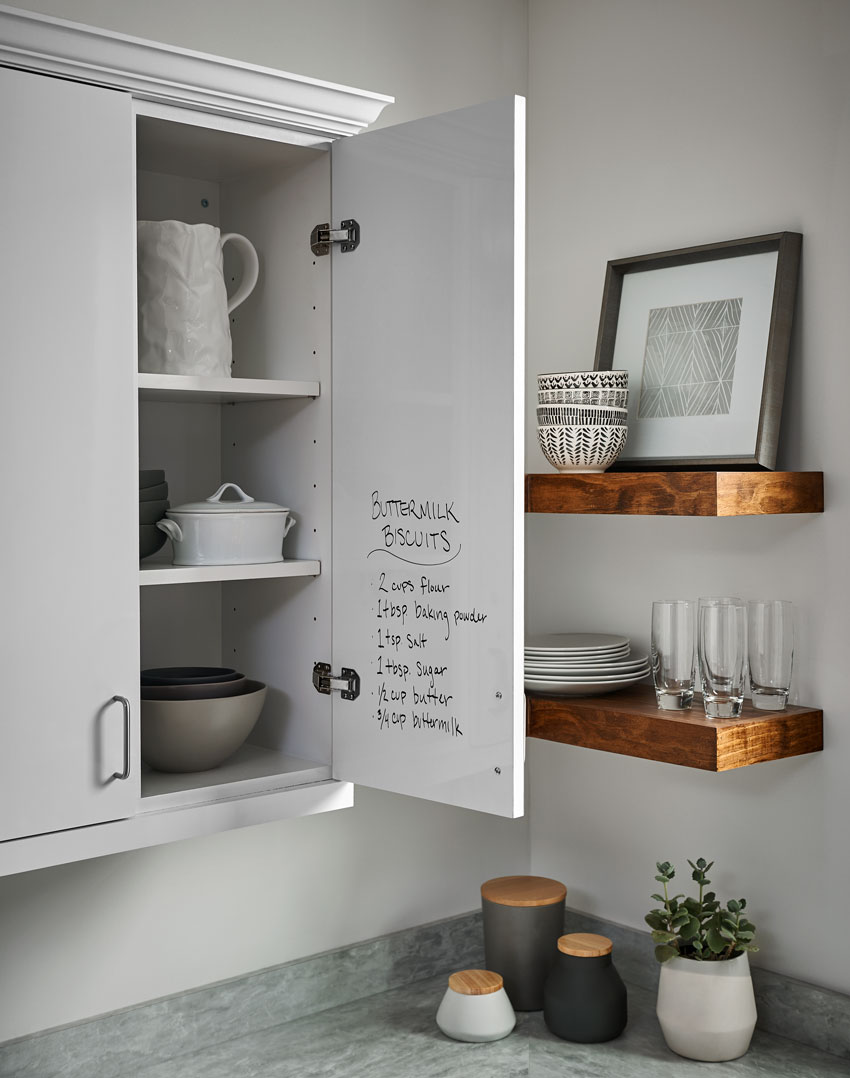
Kitchen cabinets make an ideal location to specify some of the more innovative surface materials available today.
Bathrooms also often lend themselves to stone and ceramic materials for sink and shower areas where water resistance is a priority. But, much like kitchens, they also can be livened up with more decorative materials on cabinet facings, permanent shelves, and vanity tops.
Living Rooms and Dens
Today, living rooms and dens can easily be customized with permanent bookshelves, sliding doors, and feature wall panels, all of which benefit from different surface options. Lighter-weight materials such as laminates and leather veneers can bring wall panels to life and drastically change the interior design of a room. For example, recycled leather veneer panels can add a feeling of traditional warmth and character to a den, or even provide an upscale look for tabletops.
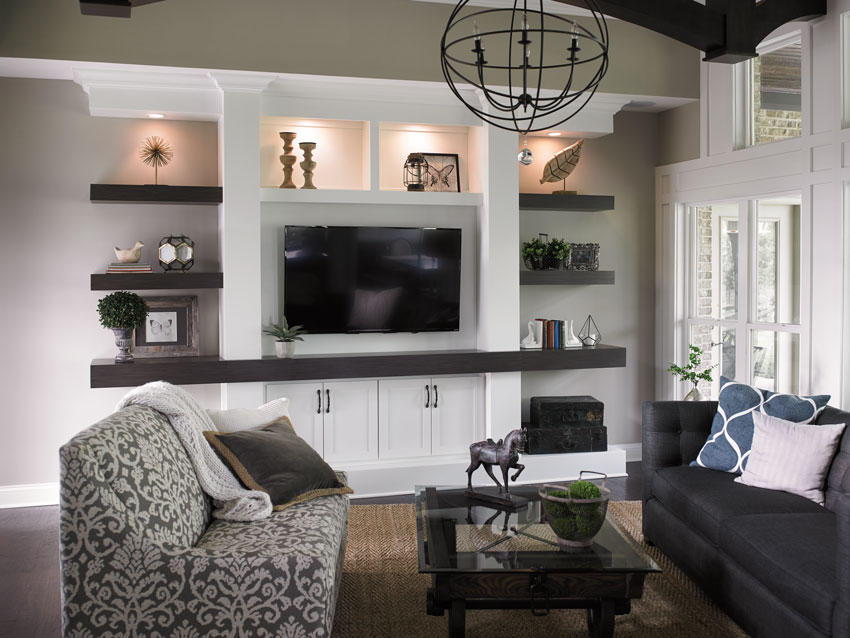
Bedrooms
Bedrooms lend themselves well to unique surfacing choices that help people personalize their space. Closet doors, for example, can be customized to bring colors and patterns into the room.
Kids’ bedrooms in particular offer a great opportunity for designers to have some fun with new surface materials. Closet and room doors can instantly be transformed by fun and funky feature walls and doors, including writable surfaces, which we’ll discuss in more depth later.

Laundry Rooms
In some dwellings, particularly multifamily residences, the laundry room may in fact be serving double duty with another part of the unit. Laundry rooms can be turned into a more usable space simply by applying less-expensive surfacing in nontraditional places. For example, with the right material, the tops of front-loading washers and dryers can easily be turned into a tabletop. With the addition of shelving and a few cabinets on the wall, the space can be transformed from a place simply to do laundry to a room with additional storage.
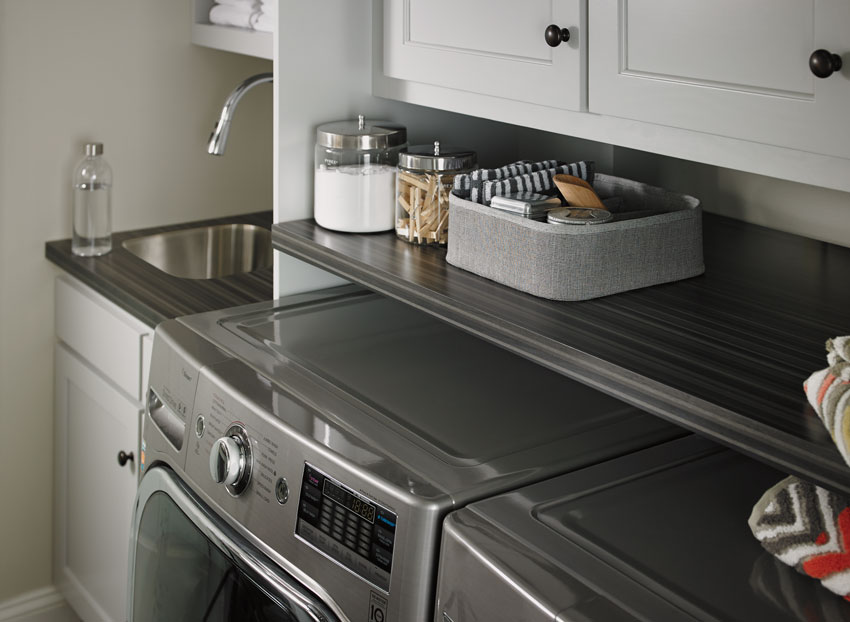
Characteristics and Attributes of Popular Surfacing Materials
With so many options available for interior surfaces, designers can sometimes feel a bit overwhelmed. An obvious tactic they can take for paring down their material choices is to focus first on the purpose. What are the requirements for the space or feature? How will it be used? Where is it in the building in relation to windows and UV light? The list goes on.
Once the use has been clearly defined, the following characteristics and attributes of popular surfacing materials can be considered to see how well they match with the proposed use: durability and strength, ease of installation and cleaning, aesthetics, and cost.
Durability
Durability is a must for any product, whether the item is a finish, furnishing, or piece of equipment. This is especially important in both living areas and public spaces of multifamily housing. For example, in larger condominiums or apartment buildings, hundreds of people can travel through the common areas every day. Repairs and replacements cost money and time for the property management company, and safety hazards are a liability. Surfaces such as countertops, doors, decorative wall coverings, and cabinetry in both residential units and common areas need to withstand daily use to minimize how often things need to be repaired or replaced.
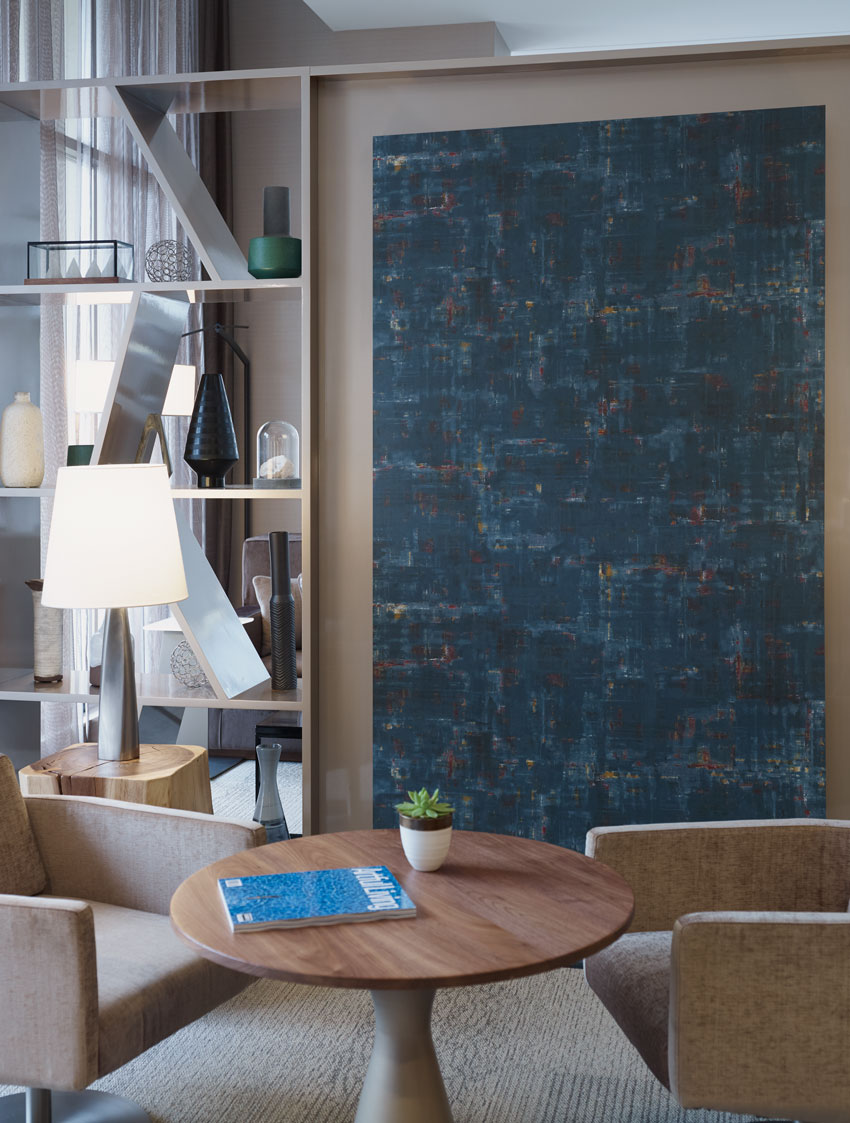
The common spaces of multifamily units can set the tone for the entire family of units. Durability, functionality, and appearance all play a role in making potential tenants feel at home.
Several properties define product durability, including:
UV resistance: This property is especially important with the growing popularity of glass in condominiums and apartment buildings. Constant exposure to sunshine—even for just a few hours a day—can discolor and degrade the quality of a material over time.
Homogeneity: In terms of surface materials, the term “homogenous” usually refers to a material with elements mixed together to give it a consistent, even look. In some products, the mixed materials, for example thermosetting resins, add to the overall durability and inherent strength of the product.
Scratch resistance: Durable materials should resist scratches and abrasions.
Porosity: Porosity levels determine whether a surface material will stain. Low porosity better resists stains, and thus protects the appearance of the surface.
Renewability: In the context of surface durability, renewability refers to whether the surface can be easily repaired or replaced.5
Ease of Installation
How easily can a surface be installed? Does it require certified specialists? A general contractor? Or can it be done as a DIY project? The answers to these questions can play a significant role in the overall cost of a project, especially in multifamily housing, where hundreds of residential units will need flooring, counters, cabinets, doors, and backsplashes, among other features. Natural stone products such as granite are far more costly and complicated to install than laminate surfaces, which can be done by just about anyone.
Ease of Cleaning
Regardless of where a surface is situated—whether in a kitchen, bathroom, or condo lounge—it needs to be cleaned easily. Surfaces need to look and be clean, and some materials handle that task better than others. High-end stone such as marble stains easily, while materials such as laminates resist stains and can even be antimicrobial. This is one case of many where the more expensive product may not necessarily be the best choice for a certain application.
Aesthetics
Aesthetics are always important for surface materials for central and frequently used rooms such as kitchens and bathrooms, but they can also make other features stand out as well. For example, unique surfaces on doors or even tabletops can impact the overall look and feel of a room.
Chances are good that clients will first consider what a surface looks like and how it fits in with the overall home and room design before they consider any other aspect. After all, the client will be using the space every day for years and engaging with the design on a daily basis, so the style matters. A new kitchen, for example, will include not only countertops and cabinetry but also backsplashes and other features to personalize the space. People tend to notice surfaces that convey a specific style. Questions concerning durability and cost certainly come into play, but the initial reaction is usually to the visual effect a material or design brings into the space.
Cost
Cost is usually a limiting factor for projects, and most people aim to keep costs down while selecting a nice-looking surface solution. For large-scale projects, cost can be especially important because material cost can add up quickly. But it’s not just about the initial cost; ongoing maintenance costs are also important, which is why choosing durable surfacing materials is critical for many designers and property managers.









